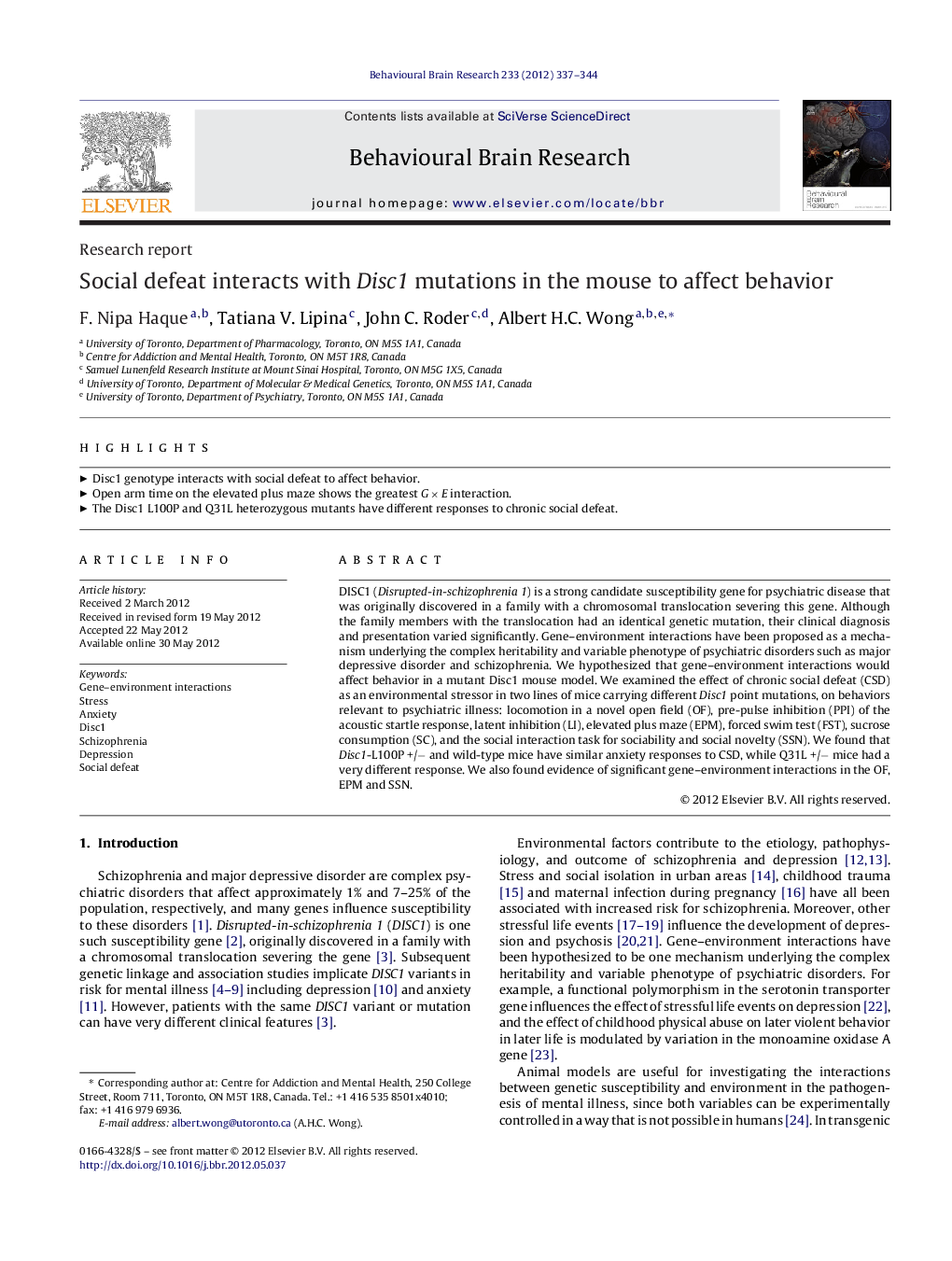| کد مقاله | کد نشریه | سال انتشار | مقاله انگلیسی | نسخه تمام متن |
|---|---|---|---|---|
| 4313139 | 1289986 | 2012 | 8 صفحه PDF | دانلود رایگان |

DISC1 (Disrupted-in-schizophrenia 1) is a strong candidate susceptibility gene for psychiatric disease that was originally discovered in a family with a chromosomal translocation severing this gene. Although the family members with the translocation had an identical genetic mutation, their clinical diagnosis and presentation varied significantly. Gene–environment interactions have been proposed as a mechanism underlying the complex heritability and variable phenotype of psychiatric disorders such as major depressive disorder and schizophrenia. We hypothesized that gene–environment interactions would affect behavior in a mutant Disc1 mouse model. We examined the effect of chronic social defeat (CSD) as an environmental stressor in two lines of mice carrying different Disc1 point mutations, on behaviors relevant to psychiatric illness: locomotion in a novel open field (OF), pre-pulse inhibition (PPI) of the acoustic startle response, latent inhibition (LI), elevated plus maze (EPM), forced swim test (FST), sucrose consumption (SC), and the social interaction task for sociability and social novelty (SSN). We found that Disc1-L100P +/− and wild-type mice have similar anxiety responses to CSD, while Q31L +/− mice had a very different response. We also found evidence of significant gene–environment interactions in the OF, EPM and SSN.
► Disc1 genotype interacts with social defeat to affect behavior.
► Open arm time on the elevated plus maze shows the greatest G × E interaction.
► The Disc1 L100P and Q31L heterozygous mutants have different responses to chronic social defeat.
Journal: Behavioural Brain Research - Volume 233, Issue 2, 1 August 2012, Pages 337–344